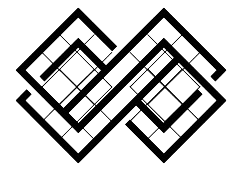Harnessing wind energy is a practical and eco-friendly way to produce renewable power for your home or off-grid setup. Building your own small wind turbine may sound challenging, but with the right guidance and tools, it can be an achievable project for beginners. This guide will walk you through each step, from understanding wind energy to building and maintaining your own turbine.
Why Choose Wind Power?
Wind power is a sustainable and efficient energy source. Unlike solar panels, wind turbines can generate electricity 24/7 as long as there’s sufficient wind. Here’s why wind power might be the perfect addition to your renewable energy setup:
- Reliable Energy Source: Wind energy can complement solar power, ensuring energy generation at night or on cloudy days.
- Eco-Friendly: Wind turbines produce zero emissions, reducing your carbon footprint.
- Cost-Effective Over Time: After the initial investment, wind energy is virtually free, reducing long-term energy costs.
What You’ll Need to Get Started
Before diving into construction, gather these essential tools and materials:
Materials:
- DC motor or generator (acts as the turbine’s power generator)
- PVC pipes (for blades)
- Steel pipe or sturdy pole (to mount the turbine)
- Charge controller and battery storage system
- Inverter (to convert DC to AC power)
- Nuts, bolts, and brackets
Tools:
- Drill with various bits
- Hacksaw or pipe cutter
- Screwdriver set
- Multimeter (to test the turbine’s output)
Tip: Ensure your chosen DC motor is rated for high efficiency at low RPM (revolutions per minute). This will maximize energy generation.
Step-by-Step Guide to Building a Small Wind Turbine
1. Select the Right Location
Wind turbines require consistent airflow to operate efficiently. Choose an open area with minimal obstructions such as trees or buildings.
- Tip: Place the turbine at least 30 feet higher than any nearby obstructions within a 300-foot radius.
2. Design the Blades
The blades capture wind energy and transfer it to the generator. PVC pipes are affordable and easy to shape for this purpose.
- Cut the PVC pipe into three equal-length sections.
- Shape the blades into an aerodynamic curve using a hacksaw.
- Attach the blades securely to the hub of the DC motor.
Tip: Longer blades increase energy capture, but they require more wind to rotate. Aim for a blade length of 3-4 feet for optimal performance.
3. Assemble the Generator and Mount
The generator converts the kinetic energy from the blades into electricity.
- Secure the DC motor to a metal hub using bolts.
- Attach the hub to the steel pipe, ensuring it can rotate freely.
- Mount the assembly on a sturdy pole.
4. Install the Electrical Components
- Connect the generator to a charge controller, which regulates voltage and prevents overcharging.
- Link the charge controller to a deep-cycle battery for energy storage.
- Attach the inverter to the battery system to convert DC power into usable AC power.
Tip: Use weatherproof enclosures to protect electrical components from the elements.
5. Test and Fine-Tune Your System
Once assembled, test the turbine’s output using a multimeter. Adjust the blade angle or mounting position as needed to maximize efficiency.
Maintaining Your Wind Turbine
Regular maintenance ensures your turbine runs smoothly and extends its lifespan. Follow these tips:
- Inspect the Blades: Check for cracks or wear every 3-6 months.
- Lubricate Moving Parts: Apply lubricant to the generator and rotating joints to prevent wear.
- Check Electrical Connections: Ensure all wires are secure and free from corrosion.
- Monitor Output: Use a multimeter to track the turbine’s energy production. Significant drops in output may indicate an issue.
Common Questions
What wind speed is required for a small turbine to work?
Most small wind turbines require a minimum wind speed of 5-10 mph to generate electricity efficiently.
Can I use a wind turbine alongside solar panels?
Yes! Combining wind and solar power creates a hybrid system, ensuring energy generation during diverse weather conditions.
How much energy can a small wind turbine produce?
A typical small turbine can generate between 400-1,000 watts, depending on wind speed and turbine size.
Invite the Community
Building your own wind turbine is both rewarding and empowering. If you’ve already embarked on this journey, we’d love to hear from you! Share your tips, lessons learned, or challenges faced in the comments below to help others in their renewable energy adventures.
By embracing DIY wind power, you’re taking a meaningful step toward sustainable living. Ready to get started? Gather your tools, harness the wind, and power your future!
Resources:

